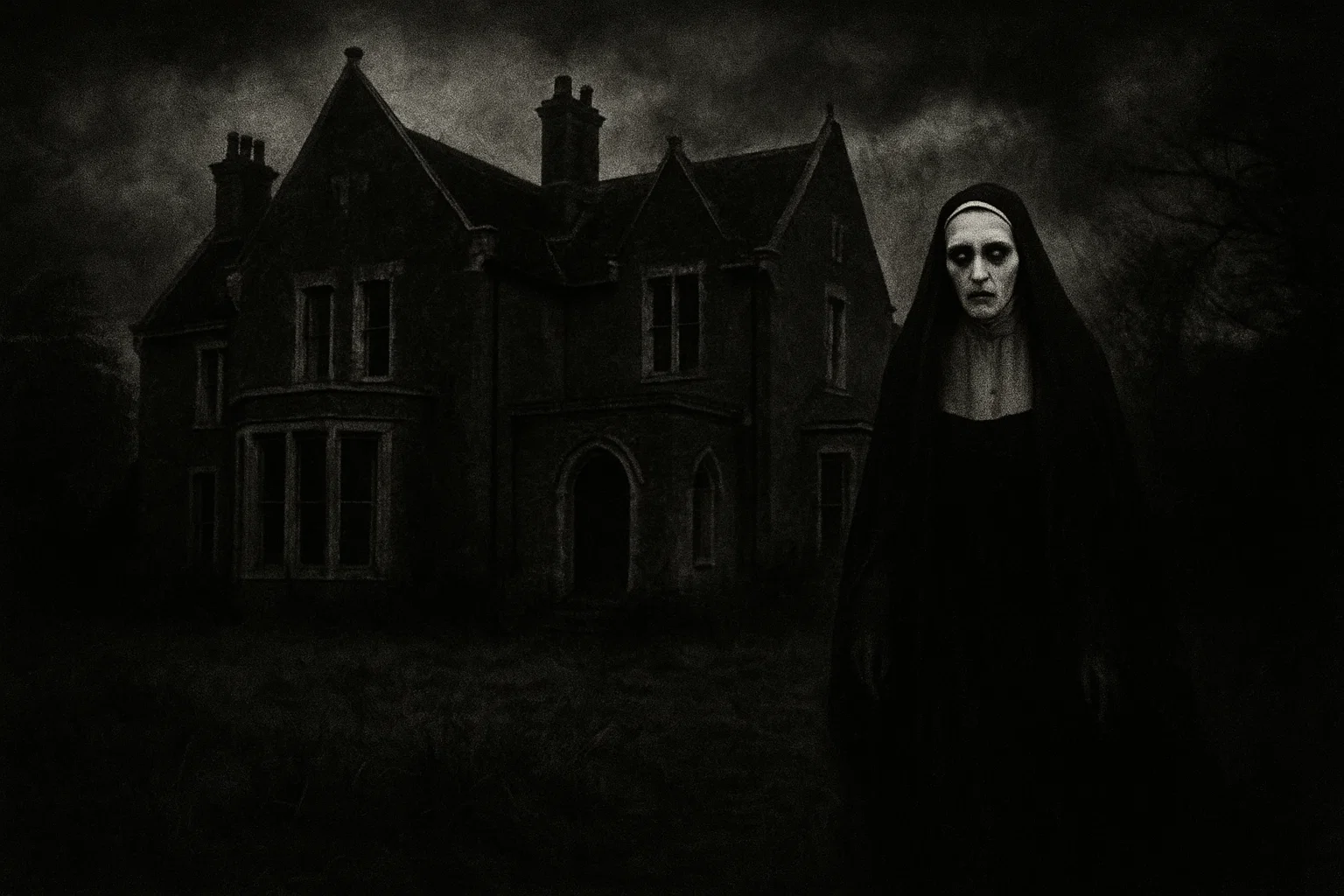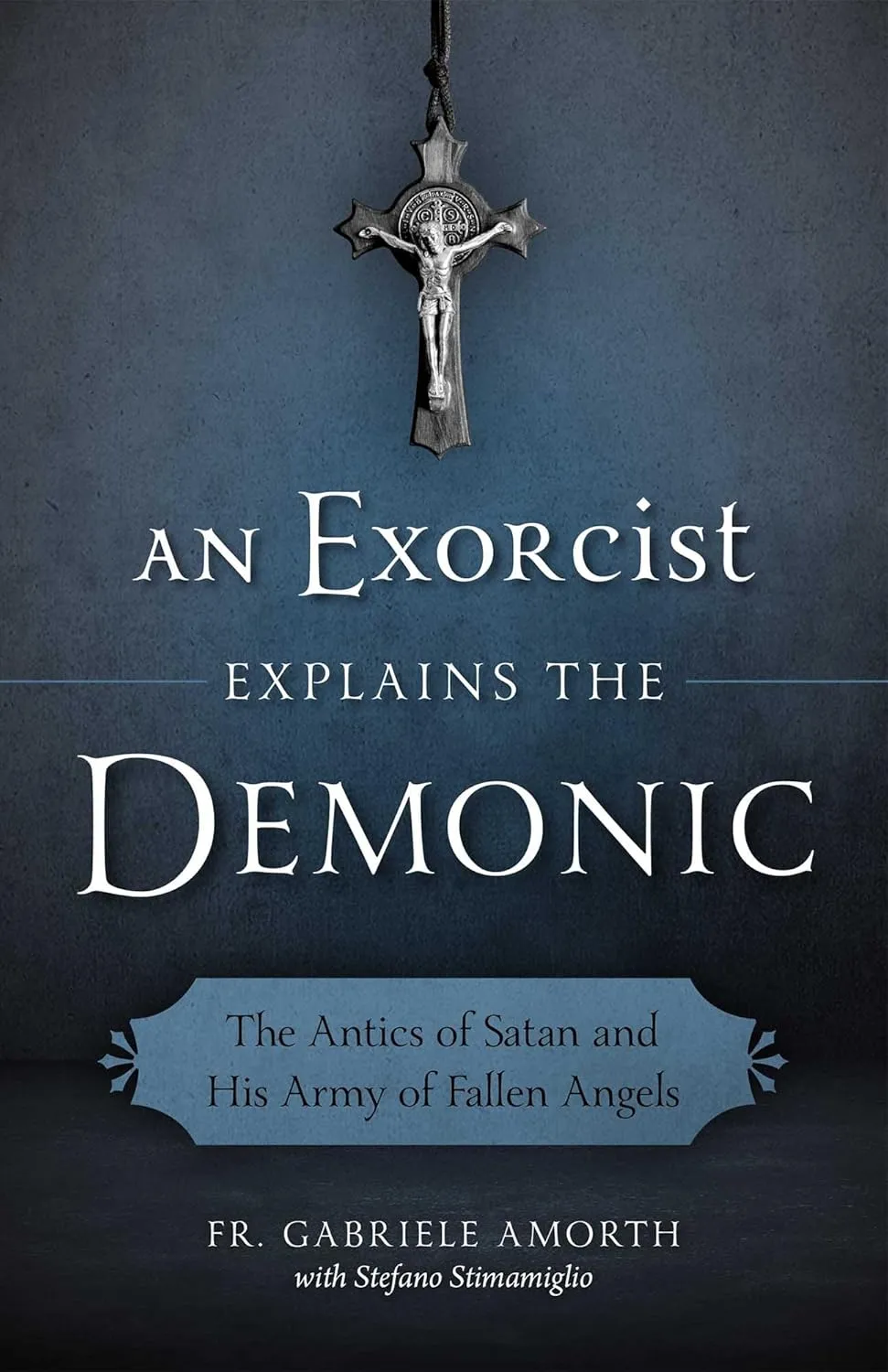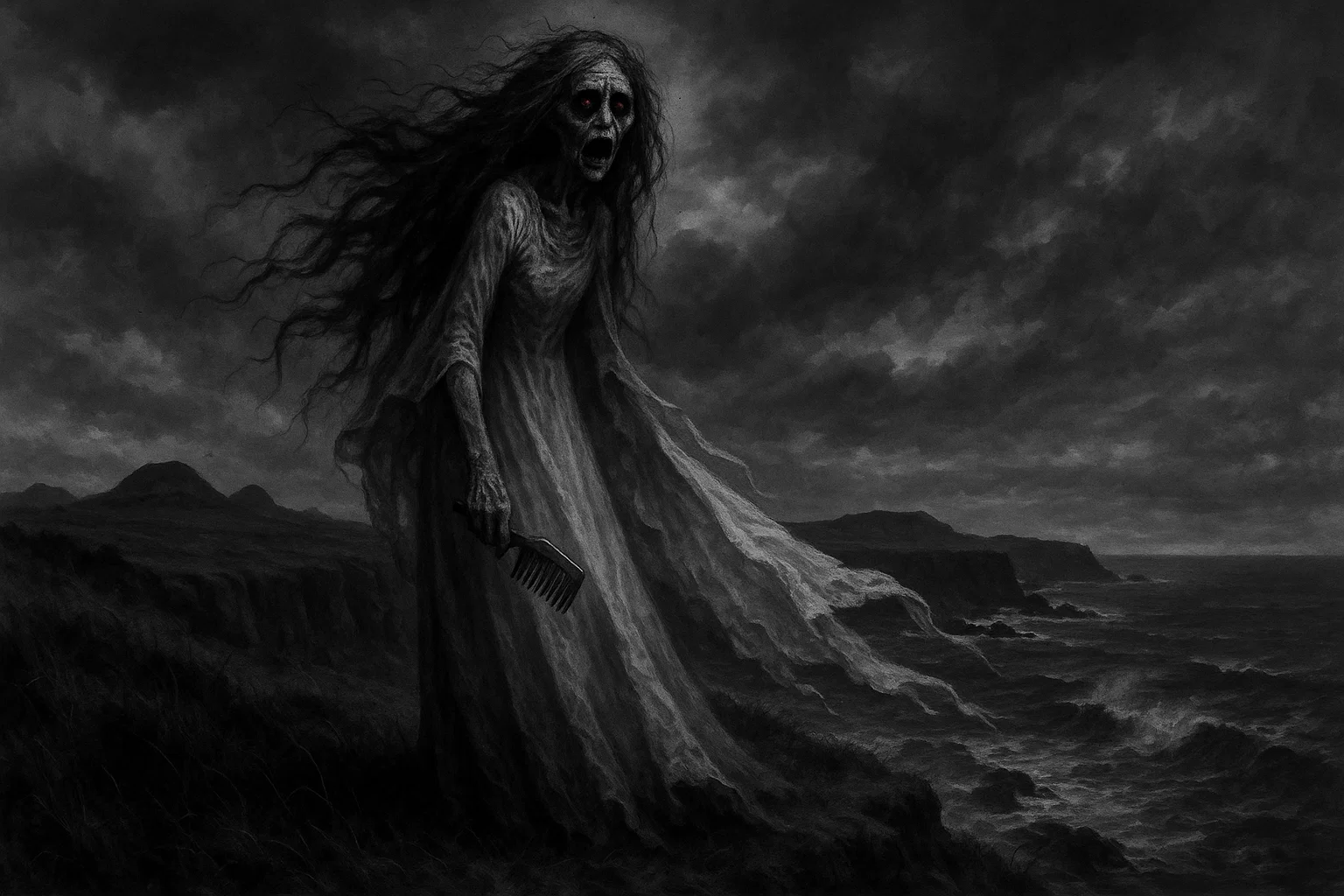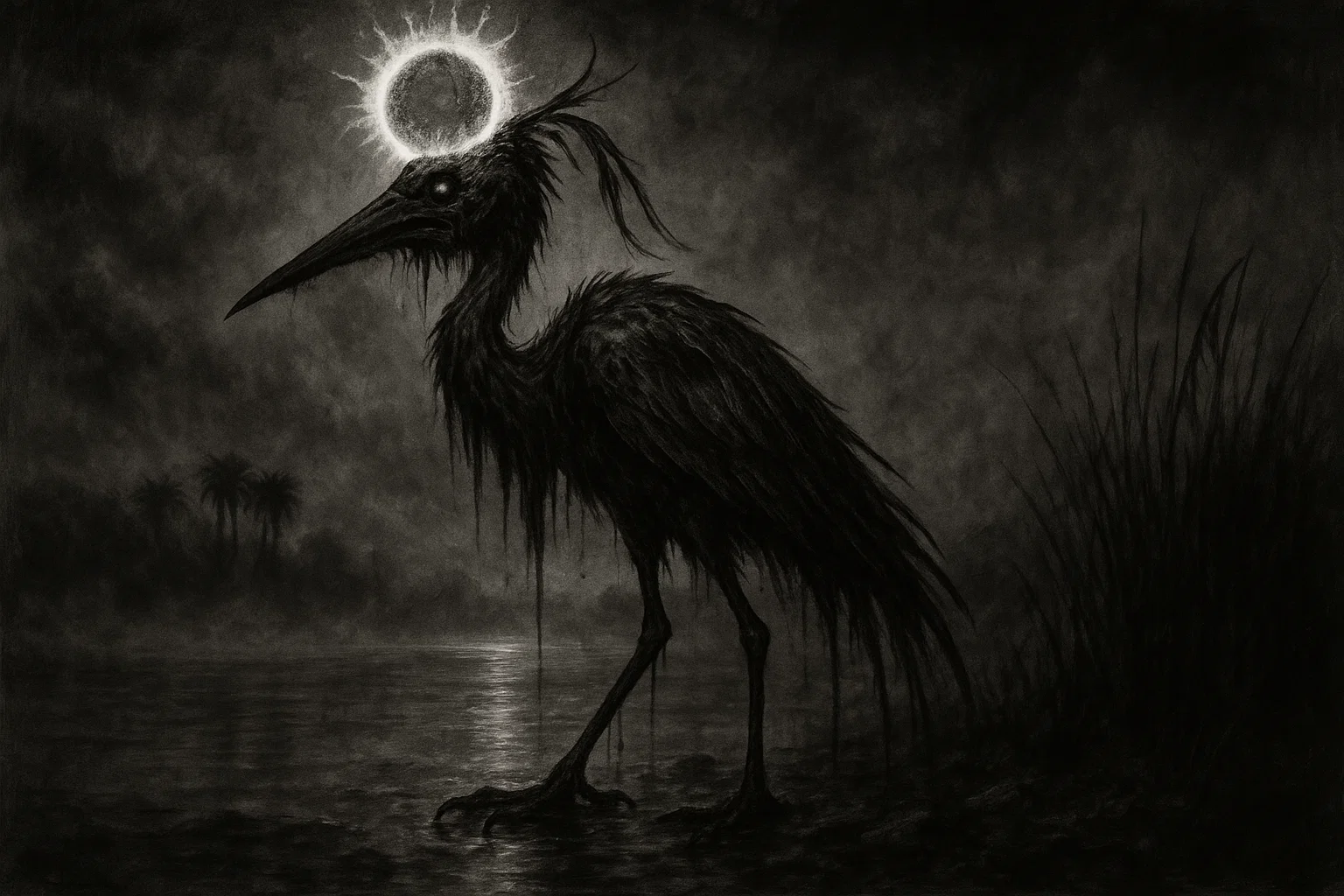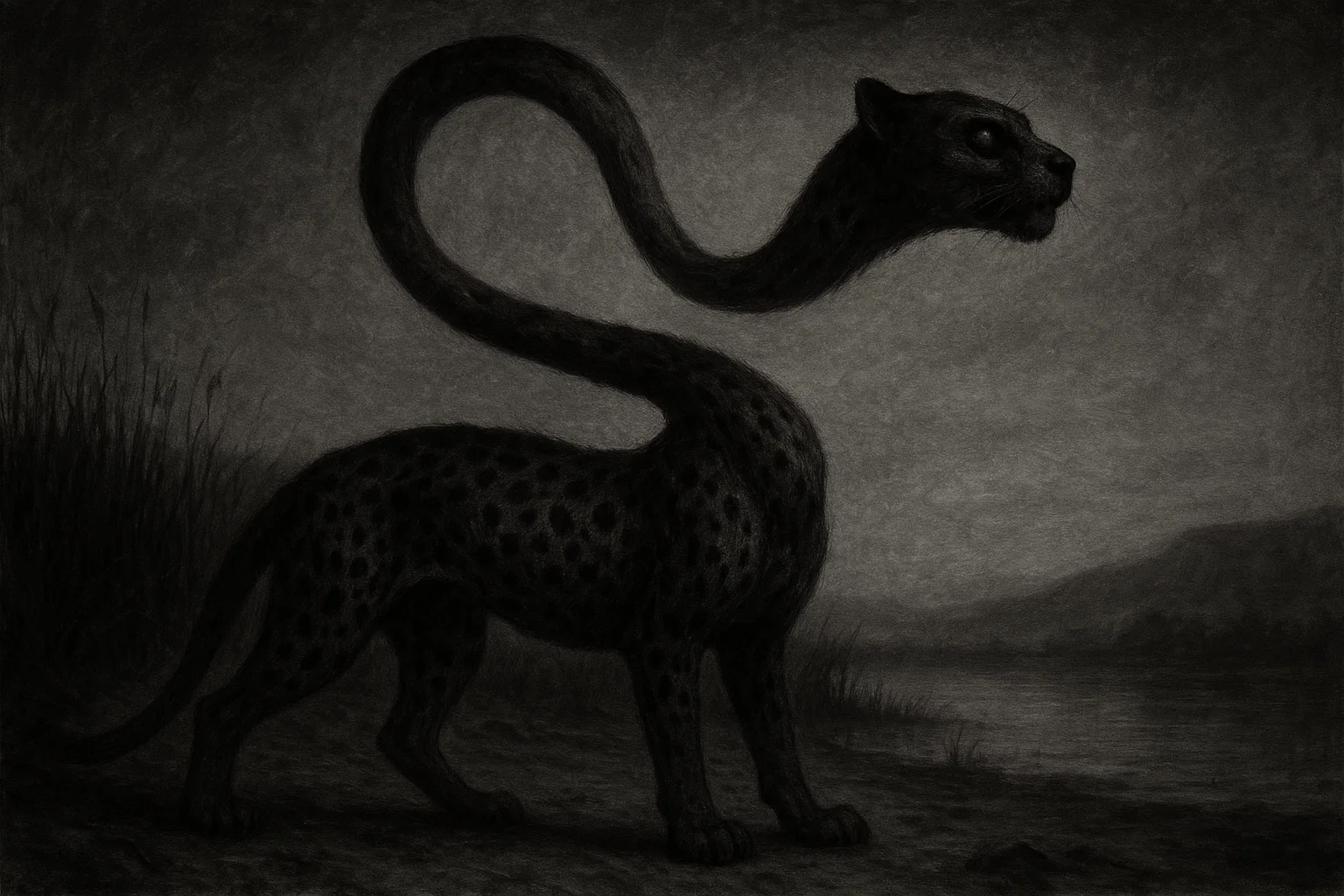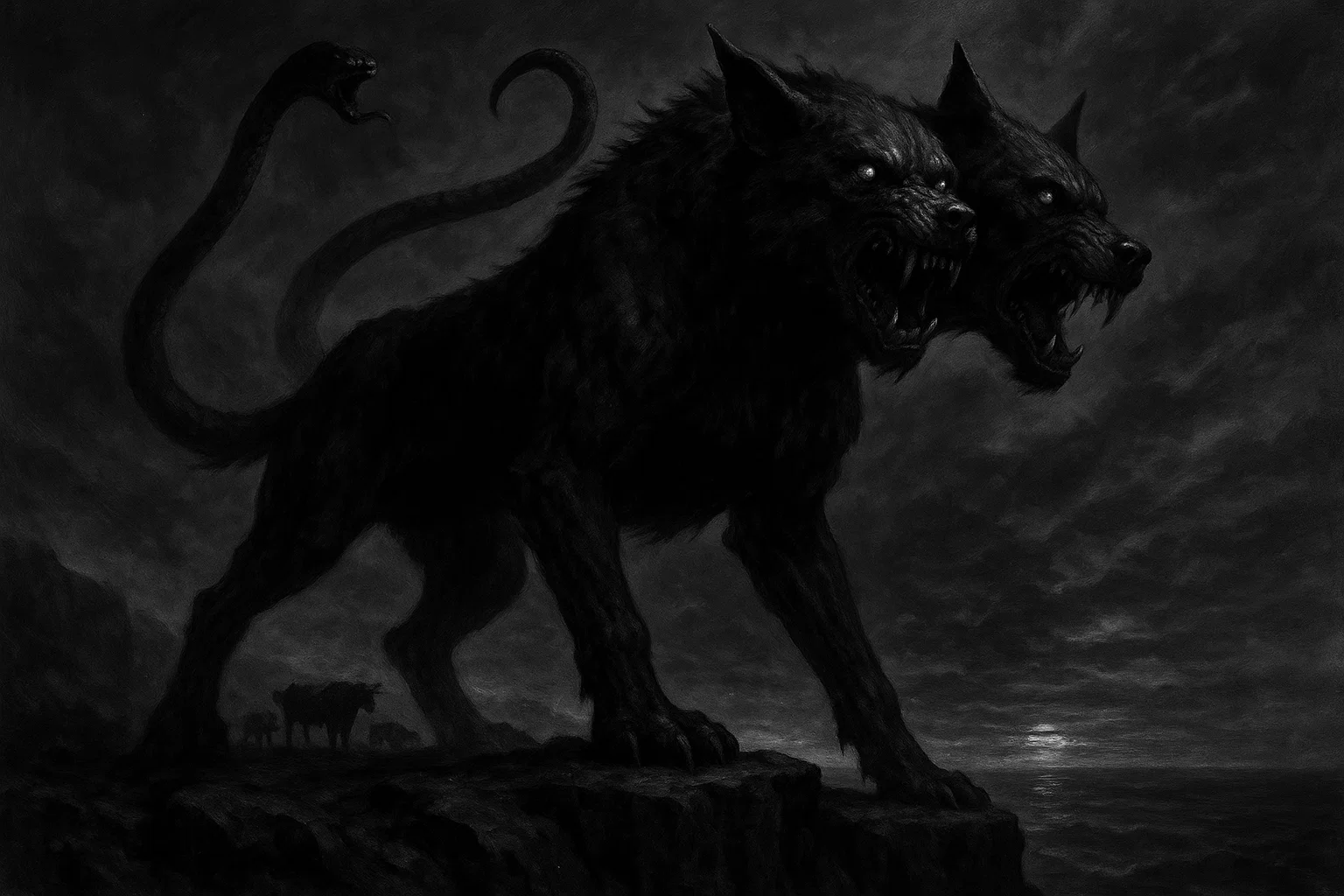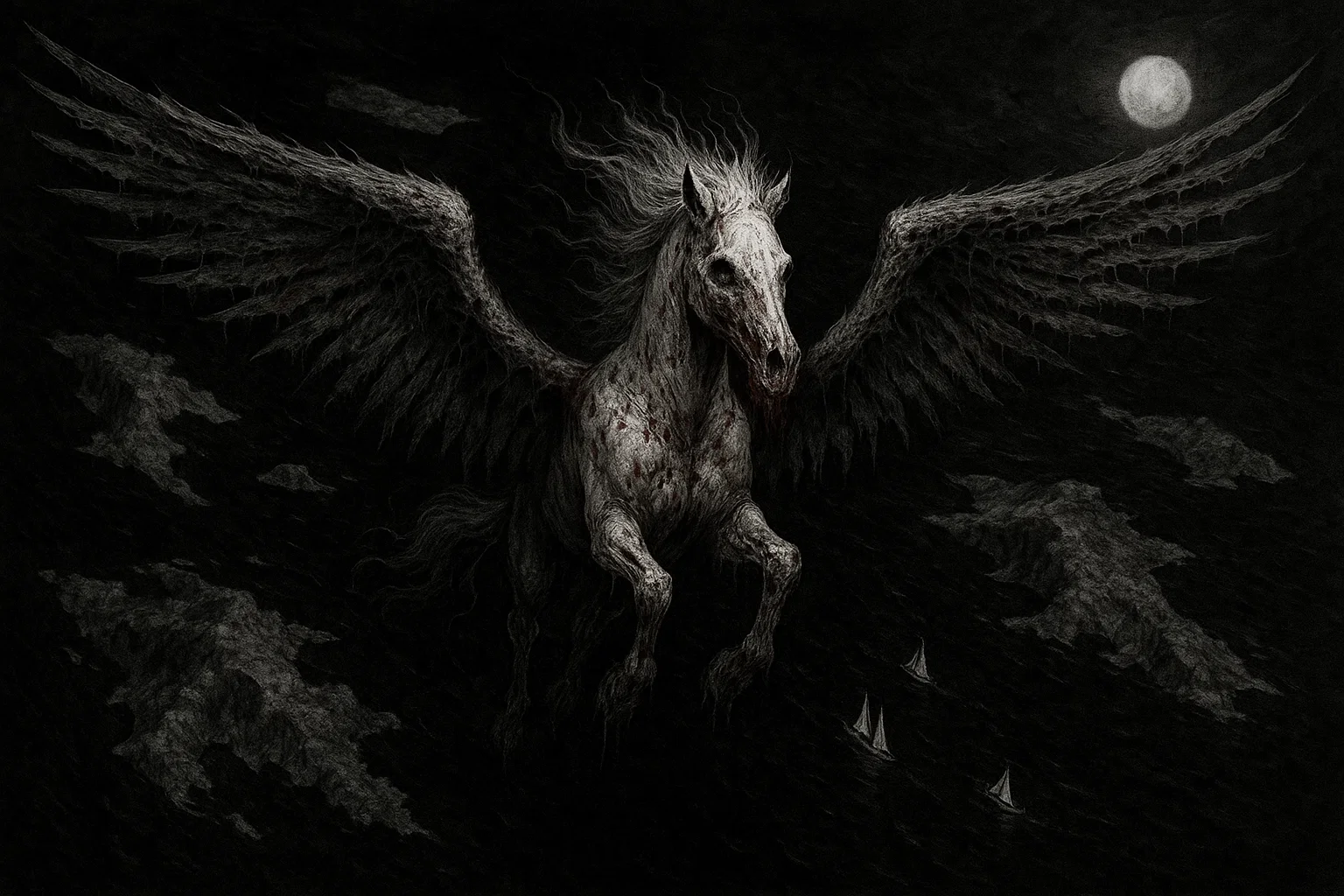Picture a sprawling, red-brick mansion in the sleepy Essex village of Borley, England, where shadows seem to whisper secrets. Borley Rectory, built in 1862 and dubbed “the most haunted house in England” by ghost hunter Harry Price, has chilled spines for over a century.
From ghostly nuns gliding through gardens to objects hurled by unseen hands, the rectory’s paranormal tales exploded into public fascination in 1929, thanks to Price’s headline-grabbing investigations.
Burned down in 1939 and demolished in 1944, its legend lives on, fueled by eerie eyewitness accounts and lingering questions: Were these hauntings real, or a mix of fraud and fantasy?
Summary
Overview
| Attribute | Details |
| Name | Borley Rectory, The Most Haunted House in England |
| Location | Borley, Essex, England, UK |
| Longland Scale | Class L4 [See the Longland Scale Explanation] |
| History | The original rectory was built in 1862 and badly damaged by an accidental fire in 1939. It was finally demolished in 1944. Local legends, which were later discredited as historical fact, suggested a monk was executed and a nun was bricked up alive in the area in the 14th century for a forbidden affair. |
| Death Toll | 2 confirmed historical deaths (Reverend Henry Bull in 1892 and his son, Reverend Henry Foyster Bull, in 1927, both died in the Rectory’s ‘Blue Room’) + 1 alleged paranormal death (The nun, Marie Lairre, supposedly murdered and buried on the site in an earlier building). Note: The fire in 1939 was not fatal. |
| Type of Haunting | Intelligent, Poltergeist, Apparitions, Ghosts (General), Thoughtform Hauntings (due to the influence of psychic investigators and inhabitants) |
| Lunar / Seasonal Pattern | No accurate, publicly reported statistic regarding a clear lunar or seasonal pattern exists; however, activity was often reported to occur or escalate shortly after new residents moved in (e.g., the Smiths in 1928, the Foysters in 1930). |
| Entities | A Nun (allegedly Marie Lairre), a Monk, Reverend Henry Bull, Reverend Harry Bull, a Coach and Headless Horsemen, and an alleged spirit communicator named Sunex Amures. |
| Manifestations | Apparitions (nun, carriage), poltergeist activity (objects moving/hurled, smashing glass, furniture), unexplained footsteps, ringing servant bells (even when disconnected), strange lights, wall-writing/messages, odd smells, whispering sounds, phantom touches, and a loud crash. |
| First reported sighting | 1863, when children of the first rector claimed to have seen the ghost of a nun. |
| Recent activity | After the Rectory’s demolition in 1944, reports of ghostly occurrences continued at the site and in the nearby Borley Church, with recent reports still being made by visitors in the surrounding area (e.g., sightings of a figure in a light-colored ‘gown’ in the lane). |
| Threat Level | 5/10 (potentially aggressive) [See the Threat Level Explanation] |
| Hoax Confidence Rating | 7/10 (Probably a hoax) [See the Hoax Confidence Rating Explanation] |
| Open to the public? | No. The original Rectory was demolished in 1944. The site is now private land, but the nearby Borley Church and its grounds, where many visitors report continued activity, are publicly accessible. |
Borley Rectory’s Origins
Borley Rectory rose on Hall Road, Borley, Essex, in July 1862, built for Reverend Henry Dawson Ellis Bull, the parish rector. Designed by architect Henry Hakewill, the Gothic-style mansion replaced an earlier rectory destroyed by fire on February 17, 1841.
With 23 rooms, a private chapel, and sprawling cellars, it housed Bull’s wife, Caroline Sarah Foyster, and their 14 children. By 1875, a new wing added space for the growing family, but the rectory’s odd layout—narrow hallways, hidden staircases, and a gloomy courtyard—gave it an unsettling vibe from day one.
Locals whispered about hauntings tied to the site’s supposed past as a 13th-century Benedictine monastery. A legend claimed a nun ghost and a monk, caught in a forbidden romance, were executed—she was bricked up alive, he was hanged.
No records confirm a monastery ever stood there, but the tale, likely spun by Bull’s imaginative kids, set the stage for Borley Rectory’s spooky rep. By early 1863, villagers reported hearing footsteps in the empty rectory, a sign of trouble to come.
Why Do So Many Successful People Secretly Wear a Little Blue Eye?
Limited time offer: 28% OFF. For thousands of years, the Turkish Evil Eye has quietly guarded wearers from the unseen effects of jealousy and malice. This authentic blue glass amulet on a soft leather cord is the real thing – beautiful, powerful, and ready for you.
The Bull Family’s Encounters
Henry Bull served as rector until his death on May 27, 1892, in the rectory’s Blue Room. His son, Reverend Henry “Harry” Bull, took over, living there with his wife, Ivy, and their daughters—Ethel, Freda, Mabel, and Elsie—until his own death in the Blue Room on June 9, 1927.
The Bulls embraced the rectory’s eerie aura.
On July 28, 1900, the four sisters, aged 16 to 22, spotted a nun ghost at twilight, 40 yards from the house near the “Nun’s Walk” path. They described her as pale, in a black habit, gliding silently before vanishing. They chased her, but she was gone.
Local organist Ernest Ambrose later confirmed the family’s conviction, saying they saw the nun ghost “multiple times” between 1900 and 1910.
Other oddities piled up. In 1886, servant Sarah Mills heard a woman’s voice cry, “Don’t, Carlos, don’t!” near the Blue Room. By 1911, Harry Bull built a summerhouse to watch the Nun’s Walk, claiming he saw the nun ghost himself.
Witnesses like gardener James Benton reported a phantom coach with headless horsemen on Hall Road in 1915, while bells rang without cause in 1920. These stories, though vivid, lacked hard proof, and skeptics later chalked them up to the Bulls’ storytelling flair.
New Residents, More Hauntings
The Smiths (October 2, 1928–July 14, 1929)
Reverend Guy Eric Smith and his wife, Mabel, moved into Borley Rectory on October 2, 1928, hoping for a quiet parish life. They got anything but. Within weeks, Mabel found a human skull—possibly female—in a library cupboard on November 12, 1928.
By December, they heard footsteps pacing the Blue Room, where Harry Bull had died. On January 15, 1929, Mabel saw a “gray, wispy figure” by the garden gate, vanishing when she approached. Guy reported that servant bells were ringing, though the wires had been cut, on February 3, 1929.
Poltergeist activity followed: keys vanished, dishes smashed, and on March 10, 1929, a candlestick flew across the dining room, narrowly missing Guy.
Desperate, the Smiths contacted the Daily Mirror on June 10, 1929, sparking a media frenzy. Reporter V.C. Wall arrived with Harry Price and his secretary, Lucie Kaye, on June 12.
That night, Wall saw a light flicker inside the rectory, but found no source. Outside, he glimpsed the nun ghost near a stream, her face “sorrowful” before she faded. The Smiths, overwhelmed by publicity and paranormal stress, fled to Long Melford on July 14, 1929, never returning.
Detailed Events:
- November 17, 1928: Mabel heard whispers from the chapel: “Mabel, help me.”
- February 20, 1929: Guy saw a headless figure in the courtyard at midnight.
- March 25, 1929: A phantom carriage was heard on Hall Road by neighbor Mary Pearson.
- June 13, 1929: Price recorded temperature drops (from 68°F to 55°F) in the Blue Room during a séance.
You may also enjoy:
Gwodz Road Haunting: Alabama’s Most Terrifying Ghost Story
September 17, 2025
Complete Guide to Oklahoma Bigfoot Sightings (1942–2025)
August 5, 2025
Alecto: Demon of Madness, Possession, and Endless Vengeance
September 1, 2025
The Complete List of All Haunted Places in Arkansas
October 8, 2025
The Winchester Mystery House Haunting: The Real Story
October 23, 2025
Is My Home Haunted or Just Old? How to Tell the Difference
September 5, 2025
The Foyster Family (October 16, 1930–October 29, 1935)
Reverend Lionel Algernon Foyster, his wife, Marianne, and their daughter, Adelaide, moved in on October 16, 1930. The hauntings turned violent. Marianne, then 31, became the poltergeist’s focus.
On November 5, 1930, she heard her name called from the Blue Room. By December, objects—books, a hairbrush, even a hammer—flew at her. On January 7, 1931, Lionel found chairs in the library studded with upright pins, as if they had been rigged to harm.
The family reported over 2,000 incidents, with 200 witnesses, including parishioners and maids.
The most chilling events involved wall writings, scrawled in pencil or charcoal, starting March 15, 1931. Messages like “Marianne, please help get” and “Light mass prayers” appeared on the staircase and in the Blue Room, some illegible.
Marianne claimed they were pleas from a spirit, possibly the nun ghost. On April 22, 1931, she was slapped by an unseen force while bathing, leaving red marks.
Adelaide, only 3, was locked in her room on June 10, 1931, with no key, screaming until freed. A guest, Edwin Whitehouse, saw the nun ghost on July 19, 1932, describing her as “young, with hollow eyes.”
Harry Price returned to Lionel’s invitation on October 13, 1931. He brought two wine bottles as gifts, but on October 14, the wine in the glasses turned to ink and perfume, though the bottles were untouched.
Price documented 300 incidents in 1931 alone, including a heavy table flipping in the library on November 20. However, he clashed with Marianne, suspecting she faked some events.
By 1935, the Foysters were broke and exhausted. They left on October 29, 1935, after Marianne admitted staging minor pranks, though she insisted most phenomena were real.
Detailed Events:
- December 12, 1930: Lionel saw a black-robed figure vanish in the chapel.
- February 9, 1931: A stove in the kitchen ignited without fuel, nearly burning maid Jane Carter.
- May 17, 1931: Wall writing read, “Marianne, I cannot get out.”
- August 3, 1932: A heavy iron gate slammed shut, trapping Adelaide outside, witnessed by gardener Tom Bates.
- March 10, 1933: Marianne was pushed down stairs, bruising her arm, with no one nearby.
- July 7, 1934: Over 50 pebbles rained inside the dining room, recorded by guest Ralph Howard.
Ever Walk Into a Room and Instantly Feel Something Watching You?
Millions have used burning sage to force out unwanted energies and ghosts. This concentrated White Sage & Palo Santo spray does the same job in seconds – just a few spritzes instantly lifts stagnation, breaks attachments, and restores peace most people feel immediately.
Harry Price: Ghost Hunter or Master Manipulator?
Harry Price, a British psychic researcher born January 17, 1881, was no stranger to the spotlight. Known for busting fake mediums, he saw Borley Rectory as his big break. His first visit on June 12, 1929, with the Daily Mirror, hooked him.
He returned repeatedly, but his most intense probe began May 19, 1937, when he leased the rectory for £200. For a year, Price and 48 observers—mostly students like Sidney Glanville and Alan Webster—lived there, armed with thermometers, cameras, and notepads.
Price’s team logged thousands of incidents.
On June 2, 1937, Glanville heard bells clang simultaneously, impossible without human tampering.
On July 15, 1937, a locked door in the Blue Room flew open, recorded by observer Helen Shaw. Séances, held weekly, were Price’s obsession.
On October 27, 1937, medium Helen Glanville (Sidney’s sister) contacted a spirit named Marie Lairre, who claimed she was a French nun ghost murdered in 1667 and buried in the cellar.
On March 27, 1938, another spirit, “Sunex Amures,” warned the rectory would burn that night at 9 p.m. No fire came, but Price hyped the prophecy.
Price’s methods were meticulous for the time. He mapped the rectory, noting “cold spots” (49°F in the Blue Room vs. 65°F elsewhere). He used string traps to detect movement and dusted flour to catch footprints.
On December 10, 1937, a brick “levitated” in the library, witnessed by three students. Price’s books, The Most Haunted House in England (published April 1940) and The End of Borley Rectory (June 1946), detailed 10 years of findings, claiming Borley Rectory proved ghosts existed.
Key Investigation Dates:
- June 25, 1937: Price photographed wall writings, later analyzed as human-made.
- August 12, 1937: Observer Charles Sutton was hit by a stone in the cellar, blaming a poltergeist.
- November 5, 1937: A séance revealed a “monk” spirit, tied to the nun ghost legend.
- February 19, 1938: Price recorded 12°F temperature drops during a nun ghost sighting by observer Mary Brooks.
Controversy and Hoax Claims
Price’s work wasn’t bulletproof. On January 26, 1956, the Society for Psychical Research (SPR), led by Eric Dingwall, Mollie Goldney, and Trevor Hall, published the “Borley Report,” tearing into him. They argued he “salted the mine,” planting evidence like the brick or coaching witnesses.
Marianne Foyster’s 1947 admission—that she faked some wall writings and bell-ringing—hurt his case.
In 2000, Louis Mayerling, a Foyster family friend, confessed in We Faked the Ghosts of Borley Rectory to staging tricks, like wearing a cape to mimic the monk or using phosphorus to spark fires. He claimed Lionel and Marianne, strapped for cash, boosted the hauntings to draw crowds.
Yet, not everything was debunked.
On Easter Sunday, April 21, 1935, a séance with George Bernard Shaw, Montagu Norman, Bernard Spilsbury, Marianne, and Mayerling saw kitchen bells clang in unison, followed by a silver-blue flash, with no explanation.
Price’s supporter, Peter Underwood, called the SPR report “biased” in 1973, noting 300 unexplained incidents. Skeptics, like scientist Terence Hines, countered that rats, acoustics, and suggestion explained most events. Price died on March 29, 1948, leaving his legacy—and Borley Rectory’s truth—hotly debated.
Warning: Do NOT Read This Collection Alone After Midnight
Limited-Time: Volume 1 for FREE!
Real reader reviews: “Had to sleep with the lights on for a week,” “Story #17 still makes me afraid of the dark,” “I finished Volume 1 and immediately bought the next 20.” Over 30 original short horror masterpieces designed to make you terrified of perfectly ordinary things.
The Ghosts That Haunted Borley Rectory
Borley Rectory’s spirits were vivid characters:
- The Nun Ghost (Marie Lairre?): Seen since 1900, she appeared on the Nun’s Walk, a young woman in a black habit. On September 12, 1931, guest Dom Richard Whitehouse saw her near the chapel, “weeping silently.” Price’s 1937 séance named her Marie Lairre, killed for loving a Waldegrave heir.
- The Monk: A shadowy, sometimes headless figure, spotted by Lionel Foyster on January 19, 1932, in the garden. Linked to the nun ghost’s doomed romance.
- Phantom Coach: Heard on Hall Road, with headless horsemen, by villager John Mason on February 28, 1929.
- Poltergeist: The star of the Foyster era, it threw objects (e.g., a kettle on April 3, 1931), wrote messages, and locked doors. On June 15, 1933, it trapped Marianne in the Blue Room for 20 minutes.
- Henry Bull’s Spirit: Marianne claimed to see him on November 10, 1930, glowering in the library.
No physical evidence—like bones or artifacts—tied these to real people. The SPR attributed the sightings to pareidolia and stress-fueled hallucinations, but the sheer volume of reports kept the legend alive.
| Date | Phenomenon | Key Figures Involved | Location in Rectory | Details | Witnesses |
|---|---|---|---|---|---|
| July 28, 1900 | Nun Ghost Sighting | Ethel, Freda, Mabel, Elsie Bull | Nun’s Walk (garden) | Four sisters saw a pale nun in a black habit, vanishing when chased. | 4 sisters, later Ernest Ambrose |
| November 12, 1928 | Skull Discovery | Mabel Smith | Library cupboard | Mabel found a human skull, possibly female, sparking fear. | Mabel, Guy Smith |
| January 15, 1929 | Nun Ghost Sighting | Mabel Smith | Garden gate | Mabel saw a gray figure vanish near the gate. | Mabel |
| February 3, 1929 | Bell-Ringing | Guy Smith | Servant quarters | Bells rang despite cut wires. | Guy, Mabel |
| June 12, 1929 | First Investigation | Harry Price, V.C. Wall, Lucie Kaye | Blue Room, garden | Wall saw flickering light and nun ghost; Price noted temperature drop. | Wall, Price, Kaye |
| November 5, 1930 | Voice Calling | Marianne Foyster | Blue Room | Marianne heard her name called at night. | Marianne |
| March 15, 1931 | Wall Writings Begin | Marianne Foyster | Staircase, Blue Room | Messages like “Marianne, please help get” appeared. | Marianne, Lionel Foyster |
| April 22, 1931 | Physical Assault | Marianne Foyster | Bathroom | Marianne slapped by unseen force, leaving marks. | Marianne |
| October 13–14, 1931 | Price’s Return | Harry Price, Lionel Foyster | Dining room | Wine turned to ink/perfume; table flipped. | Price, Lionel, Marianne |
| June 10, 1931 | Child Trapped | Adelaide Foyster | Adelaide’s room | 3-year-old locked in with no key, screaming. | Adelaide, Marianne |
| July 19, 1932 | Nun Ghost Sighting | Edwin Whitehouse | Garden | Guest saw nun with “hollow eyes.” | Whitehouse |
| July 7, 1934 | Pebble Rain | Ralph Howard | Dining room | 50+ pebbles fell inside, no source found. | Howard, Foysters |
| May 19, 1937 | Price Leases Rectory | Harry Price, Sidney Glanville | Entire rectory | Price began year-long investigation with 48 observers. | Price, 48 others |
| June 2, 1937 | Bell-Clanging | Sidney Glanville | Servant quarters | All bells rang at once, no human cause. | Glanville |
| October 27, 1937 | Marie Lairre Séance | Helen Glanville, Harry Price | Blue Room | Spirit claimed to be murdered nun buried in cellar. | Price, H. Glanville |
| December 10, 1937 | Brick Levitation | Harry Price, students | Library | Brick “floated” before three witnesses. | Price, 3 students |
| March 27, 1938 | Fire Prophecy | Harry Price, séance group | Blue Room | “Sunex Amures” warned of fire at 9 p.m.; none occurred. | Price, 10 others |
| February 27, 1939 | Rectory Fire | William Gregson | Hallway | Lamp “tipped,” burning rectory down. | Gregson, Miss Williams |
| August 15, 1943 | Bone Discovery | Harry Price | Cellar ruins | Two bones found, possibly human or pig. | Price, workers |
What Actually Happens Inside a Real Exorcism?
Limited-Time: Up to 30% OFF!
Demons speaking Latin, levitating bodies, violent outbursts, sudden healings – Fr. Amorth documented it all. This book is his step-by-step explanation of how Satan’s army operates, how ordinary people open doors, and the astonishingly simple Catholic remedies that still work today.
Borley Rectory’s Bizarre Fire
On February 27, 1939, Captain William Hart Gregson, the rectory’s new owner, was unpacking when an oil lamp “tipped over” in the hallway at 10 p.m., igniting a fire.
The rectory, unconnected to gas or electricity, burned fast. Neighbor Miss Williams swore she saw the nun ghost in an upstairs window, demanding a guinea from Price to talk. The insurance company, in a March 1939 report, suspected arson, but Gregson wasn’t charged.
Price dug in the ruins on August 15, 1943, finding two bones in the cellar—possibly a young woman’s, though locals insisted they were pig bones. On May 29, 1945, Reverend Alfred Henning buried them in Liston churchyard, after Borley’s parish refused, citing the bones’ dubious origin.
The rectory was razed in April 1944, leaving just a grassy plot. Yet, reports lingered—villagers heard bells on Hall Road in 1945, and Borley Church, nearby, became a new hotspot for ghost hunters.
You may also enjoy:
Who Is Cimejes, the Twentieth Demon in the Ars Goetia?
November 13, 2025
Inside the Infamous Amityville Haunting: What Really Happened?
October 21, 2025
So, What’s Left Today?
The famous Borley Rectory played a major role in shaping the haunted-house lore. Price’s books sold thousands, inspiring films like The Ghosts of Borley Rectory (October 11, 2021) and Borley Rectory (November 9, 2017), an animated drama narrated by Julian Sands.
Sean O’Connor’s 2022 book, The Haunting of Borley Rectory, framed it as a mirror of 1930s anxieties—war, poverty, and doubt. Podcasts like Haunted and blogs like SpookyIsles.com keep Borley Rectory trending, with fans citing its 2,000-plus documented incidents as proof of the paranormal.
Skeptics see it differently. The SPR’s 1956 report and Louis Mayerling’s 2000 confession paint Borley Rectory as a grand hoax, amplified by Price’s flair and media hype. Still, its mix of tragedy, mystery, and maybe a hint of truth hooks us. Why else do we keep telling its story?
Conclusion
Borley Rectory isn’t just a haunted house—it’s a puzzle. From the Bull sisters’ nun ghost sighting on July 28, 1900, to Marianne Foyster’s wall writings in 1931, to Harry Price’s obsessive quest ending in 1938, it’s a saga of belief versus doubt.
Over 3,000 incidents—footsteps, apparitions, flying objects—were reported across 77 years, yet no smoking gun proves ghosts walked those halls. Was it spirits, scams, or something in between? That’s for you to decide.

